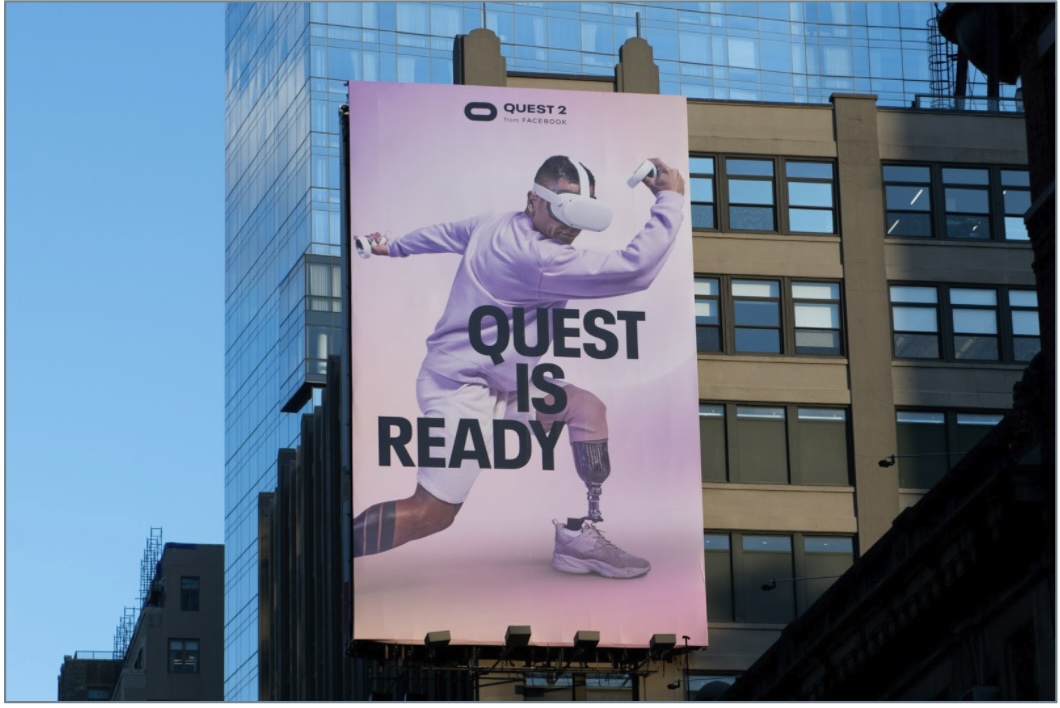Head Mounted Displays: The Airplane Test
Over the last few years, the segment of Head Mounted Displays✽ has steadily grown in interest amongst tech enthusiasts. But so far, it has utterly failed to reach mainstream adoption.✽ also known as VR glasses, MR headsets, spatial computers... - but let’s stick to the generic term to refer to a form factor of having screen(s) strapped to your face, for clarity.
Arguably the most popular have been Facebook’s Oculus product line, which has met a niche adoption particularly amongst gamers: nearly 20 total million units sold as of mid 2023 according to some sources.
If we compare to the more mature platforms, it is 300 millions smartphones and 30 millions tablets that get sold every quarter.
Facebook has tried to go beyond this niche, for example through fitness uses (something most people can understand and care about), or vague metaverse aspirations (not at all relatable for most).

An example of an ad Facebook ran to promote using the Quest for fitness. This is a terrible ad, because if you don't already know what Quest is, then you don't know what it is trying to tell you. The first time I saw this ad in San Francisco, I was with a non techie friend who thought it was an ad for some sort of insurance company.
As a product designer, one thing that always made it clear to me that Facebook had no clue what it was doing with this product category is the simple fact that I never, ever, saw anyone using it in a plane. In fact, I saw more people using their Wii U on a plane✽ before the Nintendo Switch came out, than I did people using HMDs.
✽ not counting myself, who played Wind Waker on my Wii U on a few flights. Good times.
It's been a while since I used a Quest, but I don't think you can even use one in a plane - most experiences require you to define a large "safe area", the motion tracking gets messed up due to the high speed, and the controllers would just be clunky to use. What is certain is that if I were in charge of making the Quest product line as successful as possible, my #1 priority would be to make sure it's a fantastic experience to use one on a plane, if only to just watch movies.
Planes are the perfect litmus test for head mounted displays, whose socially isolating nature is a negative point in most any other setting. On a plane you’re stuck in a seat in a noisy environment; surrounded by dozens if not hundreds of people you wish weren’t there; and the only thing you care about is making time go by as fast as possible.
There is most likely a power plug nearby, so battery life isn’t a concern.
The strangers around you can’t snatch the expensive hardware from your face and run away with it, like would be the case in most any public transportation system.✽
✽ except for a few select places like Japan; I wonder when I will see a Vision Pro for the first time on a Tokyo train, where it’s very common to see people pulling out their laptop. The one time in my life I saw someone pull out a laptop in the Paris métro, it was promptly stolen from them. I once had a Vaio P that I used on BART a few times when I commuted from Oakland into SF, but it felt like a dangerous game to play so I didn't do it for very long.
In addition, planes also have a perfect social signaling aspect to them, in the form of the business class. Some planes will board economy and business through separate doors; but many do not, and the economy plebe gets to witness, for a brief moment, the business élite sipping on champagne with their legs stretched out, as they trudge along to their cramped seats. There’s no doubt that seeing business class passengers using a product to make their trip even more comfortable would trigger curiosity, if not desire.
One company that understood this many years ago was Bose, when they shipped their QC-15 noise cancelling headphones in 2009. We now take noise cancellation for granted, but it was very new at the time.
Because this was before the time of ubiquitous internet networks and social media, meaning it wasn’t easy to quickly figure out what newfangled product this was, the headphones came with a few “courtesy cards” in their case, that you could give away to your business class comrades when they inevitably wondered what was this pair of headphones that made your travels so much more bearable.

Apple seems to understand this in a way that Facebook never did; the Vision Pro, to be released in a few weeks, has a travel mode, and the marketing materials show people using it on planes.

I think one will be able to assess the success of the Vision Pro - and the glut of lower priced HMDs from competitors that will follow in its wake - from the number of people you see wearing them in planes over the coming months and years. And maybe Facebook will finally do what it needs to let people watch Netflix on their Oculus on the plane.
〈 main page